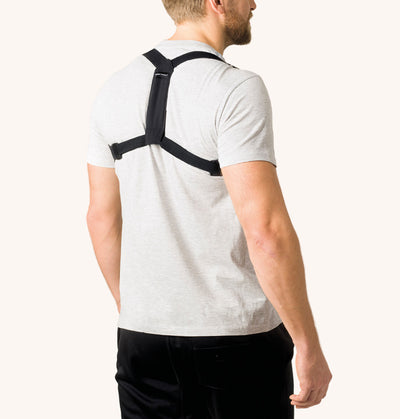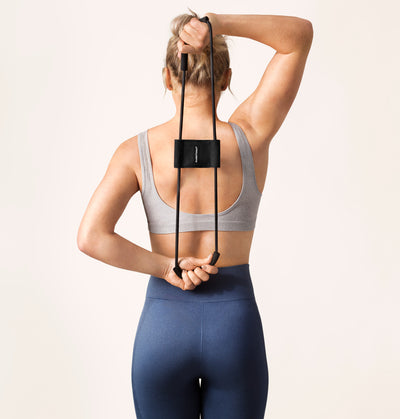How to Get Rid of Forward Head Posture: A Guide to Better Posture
Forward head posture is a type of posture where the head is in a forward position. It is common among adults in Sweden, and we are now seeing an increase in children as well. When the head is placed in front of the shoulders, it increases the load on the spine and neck, which leads to the muscles in the upper back and neck having to work hard to keep the head upright. If this continues for a long time, it can cause pain and discomfort in the neck, shoulders, back, and other parts of the body.
Why do people get forward head posture?
The reason why many people have forward head posture is believed to be because they are spending more and more time in front of computers, tablets, and mobile phones with their heads bent forward. When the head is in a forward position, the chest and neck muscles, as well as the muscles in the upper part of the neck, become short and tense, while the muscles in the lower part of the neck and upper back become weak. This causes the body to push the head forward and form a hump in the transition between the neck and back to protect itself from the increased load.
But the problem is not just in the neck. The neck is part of the spine and is therefore affected by how the rest of the spine is positioned. If the lower back is too flat or the upper back is too rounded, the neck will react to it and the head will be pushed forward as a result.
What can be done about forward head posture?
Training away forward head posture often goes through getting better posture. In order for the lower back, upper back, and neck to have a neutral curvature with minimal load, your postural muscles (deep postural muscles) need to be active. If they are not active, the spine will round backwards and often the head will be pushed forward as a result of it. Once the head is in a forward position, the above-mentioned neck and upper back muscles become short and tense to prevent the head from tipping even further forward.
With weak postural muscles, the body cannot maintain good posture when using a computer, tablet, or mobile phone. The body also does not return to good posture after use, and the forward head position becomes a habit.
What are the symptoms and consequences of forward head posture?
Forward head posture can cause both aesthetic and physical consequences. Physical symptoms such as headaches, dizziness, and pain in the neck and shoulders are common in this condition. In addition, a forward position of the head can lead to pain in the back, elbows, and wrists. It is important to be aware of these potential health problems and take steps to prevent and treat them.
Treating forward head posture with postural exercises
You can do a lot yourself at home to get rid of your forward head posture. Review your habits and note if you often end up in a hunched posture when working on the computer or looking at your phone. It may help to adjust the computer to the correct height so that the head is in line with the spine and use a screen stand to avoid looking down.
Here are some exercises that can help strengthen postural muscles and restore a neutral curvature in the spine:
Shoulder blade exercises: Sit with a straight back and pull your shoulder blades down towards your hips while pressing your chest upwards. Hold for a few seconds and repeat.
Neck muscle exercises: Stand with your neck straight and tense the muscles around your neck. Hold for a few seconds and then relax. Repeat several times.
Back stretchers: Lie on your stomach with your arms stretched forward and lift your chest off the ground. Hold for a few seconds and then relax. Repeat several times.
It is important to do these exercises regularly and combine them with a generally active lifestyle. Training cardio and strength, such as through walking and strength training, can also help improve posture and reduce the risk of forward head posture.
Summary
Forward head posture is a postural disorder characterized by a forward head position. It can be caused by a combination of short, tense muscles in the neck and upper back, as well as weak postural muscles in the lower back and abdomen.
Physical symptoms such as headaches, dizziness, and neck and shoulder pain may occur with text neck, but it can usually be trained away by improving posture and strengthening postural muscles. By using the correct technique when working on the computer and mobile and by combining exercises with a generally active lifestyle, you can prevent and treat forward head posture.
To know more read our injury guide.








